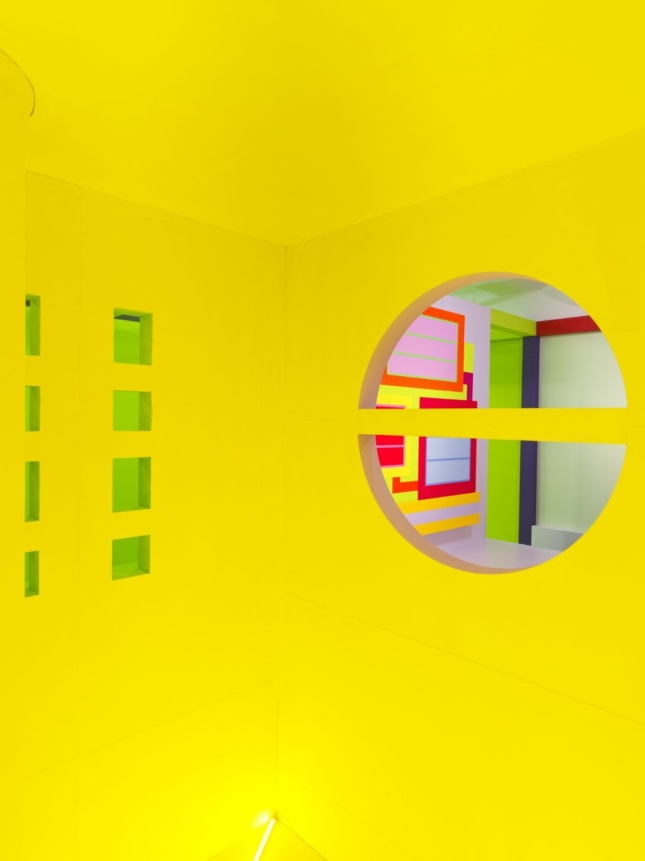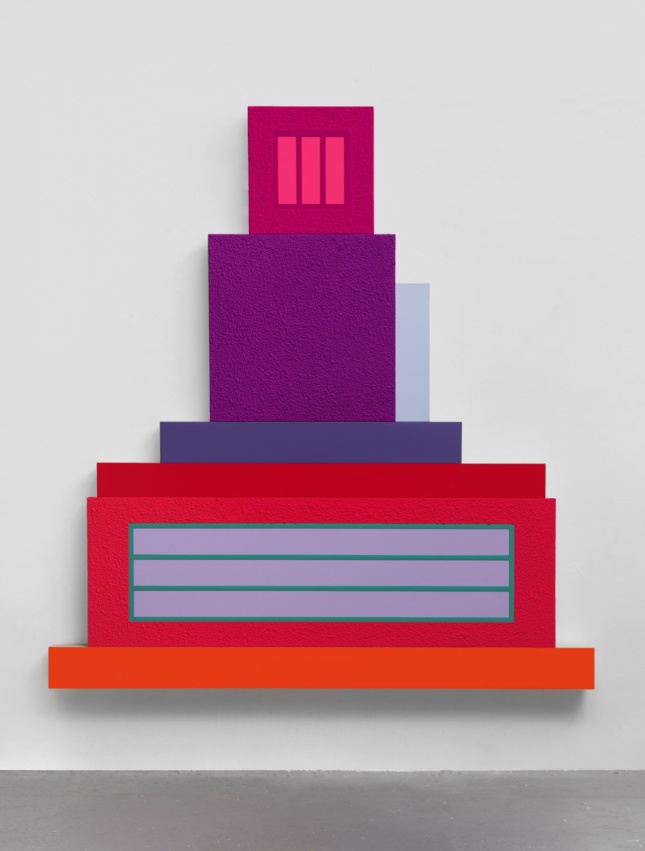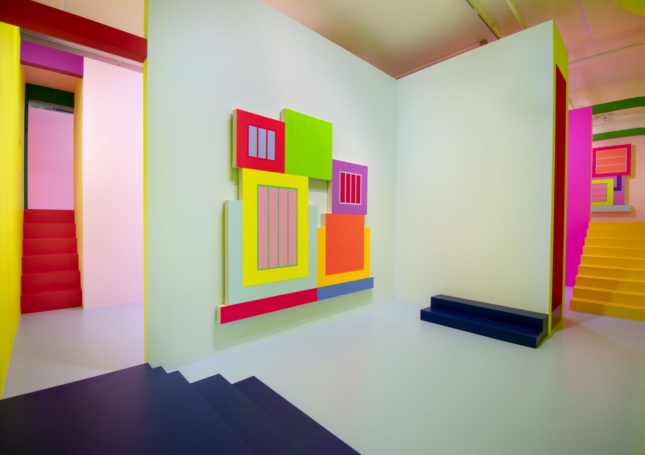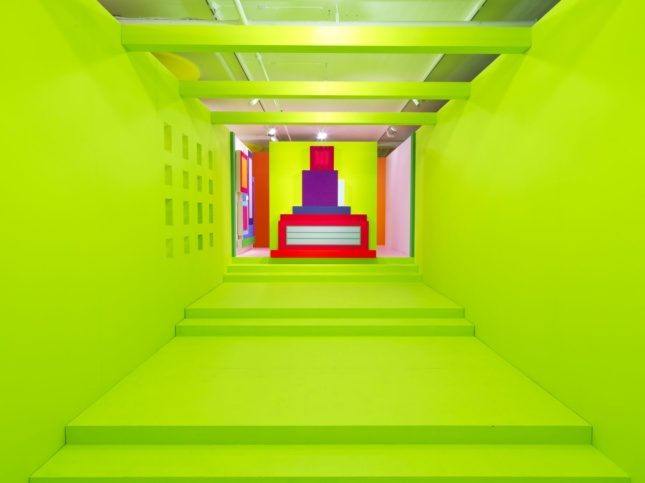Peter Halley’s Heterotopia II, a candy-colored shrine to geometric abstraction closed on December 20 at Greene Naftali gallery in Chelsea (Manhattan). The exhibition, which embodied the relationship between painting and architectural space, brought visitors into a disorienting, hyperreal world collaged out of references to science fiction, modernist architecture, and mass media—all painted in fluorescent hues. The installation was both a fortress and a stage set and brought to mind the importance of creating alternative worlds and ways of seeing while also probing the ties between architecture, art, and image.
The experience could be described as stepping into one of the Neo-Geo paintings Halley became known for in the ’80s. Or, like stepping into a Josef Albers color study—the same floor appearing to drastically transform in color as one moves from a room with pink walls to one painted orange. Housed between floor-to-ceiling yellow walls coated in Roll-A-Tex, visitors could catch small glimpses of the polychromatic, multi-level interior spaces from narrow cut-outs along the perimeter prior to entering and one could enter one of two ways: through a long hall covered in glimmering metallic tinsel, or an entry immediately confronted with a set of low, blue steps.

Eight rooms in total contained eight new shaped-canvas paintings that incorporated the same Roll-A-Tex coating as the exterior walls. Like the three-dimensional space the paintings occupied, symmetry was abandoned in favor of variously sized stacked rectangles reminiscent of prison cells, circuit boards, or maybe a section taken through a PoMo building. The rooms emanated from a central glowing core which was the only space in the gallery that could not be climbed into and occupied, but only looked down into through three distinct apertures in the surrounding rooms. Both the positive and negative shapes recalled iconic elements from modernist architects—Luis Barragan or Ricardo Legorreta’s stairs (not a handrail in sight), Louis Kahn’s concentric cut-outs, or Peter Eisenman’s grid.

Halley utilized such elements to compose sightlines, resulting in the most exciting views of the paintings being not from directly in front of, but mediated by the architecture itself—from the top of a staircase, at the intersection of two contrasting colored walls, between beams and columns, or framed by a “window”. The paintings themselves are worlds within a world within a world and have accordingly been named after Isaac Asimov’s fictional universes: Helicon, Galaxia, Terminus, and Gaia.

Creating paintings that depicted both social isolation and connectivity, the artist’s work has often looked to geometry as a metaphor for society. A heterotopia can be defined as institutions that are in opposition to the utopia, spaces that are different and that operate outside of societal norms (prisons, temples, cemeteries, and brothels are some of the examples Michel Foucault outlined in his essay “Of Other Spaces: Utopias and Heterotopias”). At the same time, heterotopias often reveal as much as they conceal, acting as a mirror that reflects back the values of the dominant culture. Halley’s Heterotopia II is a labyrinthian universe that highlighted visitors’ relationship to and perception of color in the built environment whether applied to a canvas, a wall, or pixels of a photo uploaded to social media. In today’s terms, the installation is “Instagrammable,” to say the least.

The work exhibited tensions and connections between rationalist geometry, color, and the relationship to technology that seem inescapable. So of course, I posted an image of the alien green room housing the painting Terminus to my Instagram story, to which my sister replied: “Wow! It looks like Mario World.” Despite her distance from any sort of contemporary art world discourse, she’s not all that far off. And perhaps like Mario World, much of the essence or aura of the installation was lost in stillness, on pause, or in a photograph. It took traversing the space, hugging the wall so as not to fall off the different heighths of stairs, moving up to go back down again, hopping over obstacles, or darting past other gallery-goers to truly experience the work.
It’s impossible to enter this exhibition and not think about the thousands of uploads it will, and has, generated in digital space. In the age of pop-up experiences and Instagram museums, Heterotopia II inevitably lends itself well to fashionable stories and selfie opportunities (yes, it was listed on FOMOFeed). Perhaps the work was more of a reverie than critique. The installation depicted digitally in the square cells of Instagram, rather than the physical location itself, could be viewed as the heterotopia at hand. How we see and perceive color on the screen, as opposed to witnessing the interplay of surfaces IRL, reveals a lot about how we’ve come to relate to, consume (and share) both art and architecture on a broader level.











